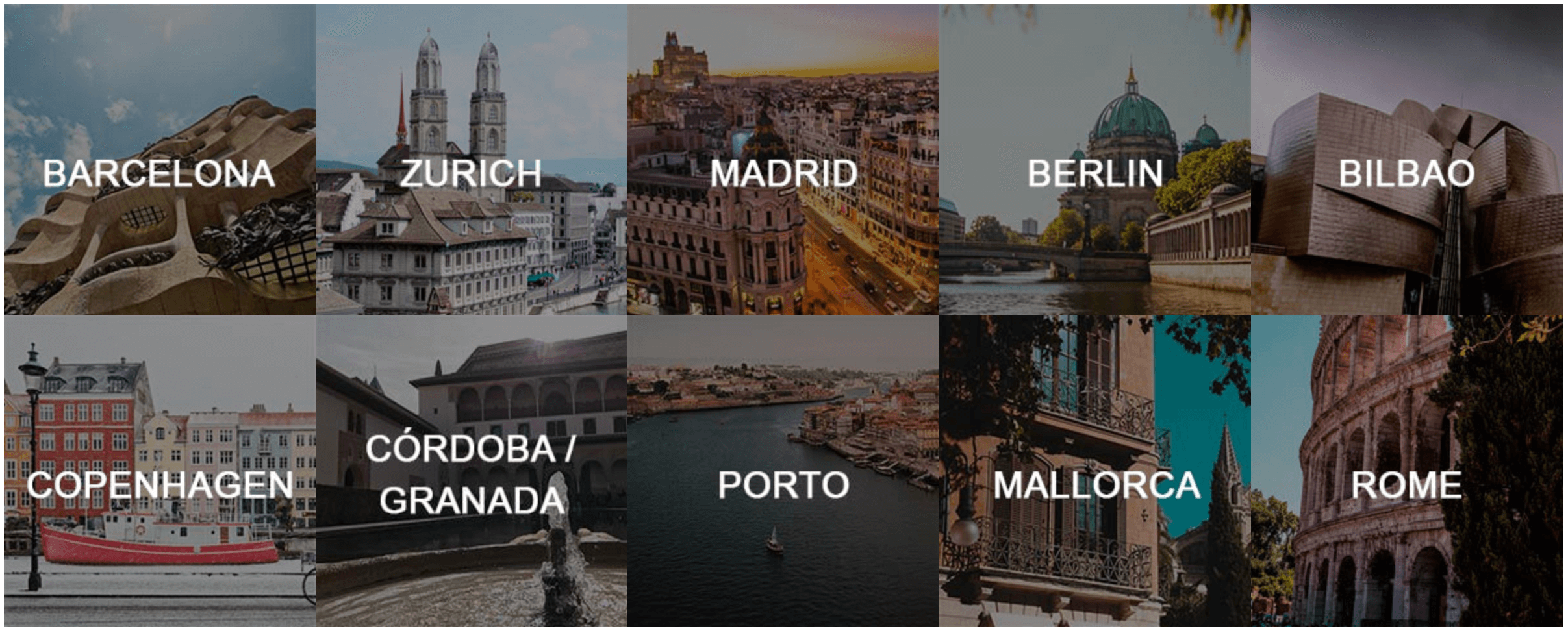“40 subjects, 10 destinations, 5 years and one shared tool: travel.” Since 2011, our Technical School of Architecture has integrated study trips to get to know architectural works and their creators “in situ”. It is an essential element of the degree and not just an extracurricular activity. In the last few years, CEU Valencia has integrated trips into every subject during the 5-year degree as a core material and backbone of studying. From Berlin to Copenhagen and very soon Porto, this innovative learning methodology allows Architecture students to learn about design, materials, urban planning and projects… on the field!
We talk with deputy director of Architecture at our University, Ignacio Juan, about the project “40 subjects, 10 destinations, 5 years and one shared tool: travel”, which he has worked on along with professors Alfonso Díaz, Andrés Ros and Ana Ábalos.
Why is travel an essential part in the training of an architect?
Travel has always been linked to an architects training and for some of the great masters of architecture it constituted as their only architectural education. However, Architecture Schools have generally only used this practice as an extra-curricular activity, unrelated to the content and development of the syllabus. Our plan consists of converting them into core study material.
What is this innovative proposal from CEU Valencia that trains architects while travelling?
At our School of Architecture, we have been travelling with the students every year since 2011, always with the objective of supplementing their training. Because of our experience in these past couple of years, what we are now doing is converting these trips into a “core subject” within the degree, sharing and coordinating the content with the rest of the subjects in a common guide. It focuses on 10 destinations, which have been strategically developed into successive cycles over 5 years, parallel to the already established semesters at degree level.
“In 2020 we will land in Porto and then we will discover Rome, but in a different way.”
How did you initially plan the trips at CEU Valencia and how have they evolved as a teaching tool whilst training architects?
In the early years, we planned the trips so that we could visit the maximum number of works and from different architects in good time with the objective of getting the best results out of the time away. Now we have moved towards “artist” trips, we are already in the second phase of integrating the trip as a teaching tool.
What do “artist” trips consist of?
We try to organise the trips in a way that we can get an in depth look at the work of a unique architect in each trip. In this format we have visited Finland to look at the complete works of Alvar Aalto; Portugal to look at the works of Fernando Távora, Álvaro Siza and Eduardo Souto de Moura; the last trip was to Denmark looking at the work of Arne Jacobsen.
What are the results of this teaching innovation of turning travel into a core subject? Why are you taking a step forward with integrating it into the curriculum?
The School of Architecture at CEU Valencia now has students from more than 30 different nationalities: from Sweden to Mozambique, Canada to Malaysia, and Ukraine to Egypt. With this plan, in which travel is becoming a core subject of the degree, the ability to bring together all the different areas guarantees that our students will gain knowledge of cultural values, the places and buildings that they visited. They can complete their training, which is now of course international, with the life experience from the trips.

Can you tell us more about the steps to follow in this exciting learning experience?
We have just started to think about those new destinations, new cultures and new horizons that we want to explore. In 2020 we will land in Porto, which is quite close to us geographically but has a very particular and genuine personality. After that we want to discover Rome, but in a different way. Rome, the old capital of the Mediterranean. A city that has had such a big impact in our culture and that we often see just as a historical site. We want to broaden our vision and analyse the city from the point of view of young architects and groundbreaking studios. The most modern and avant-garde Rome, a city we have many things to learn from.
During the academic year, students dive into the architecture of the chosen destination through different workshops and projects, exchanging experiences with peers from other European schools. With this background, they are set off for a trip in which they discover first-hand he works of the most prestigious architects and engineers in the world.
A new approach to learning architecture through travel, from our School to the world and back!


























